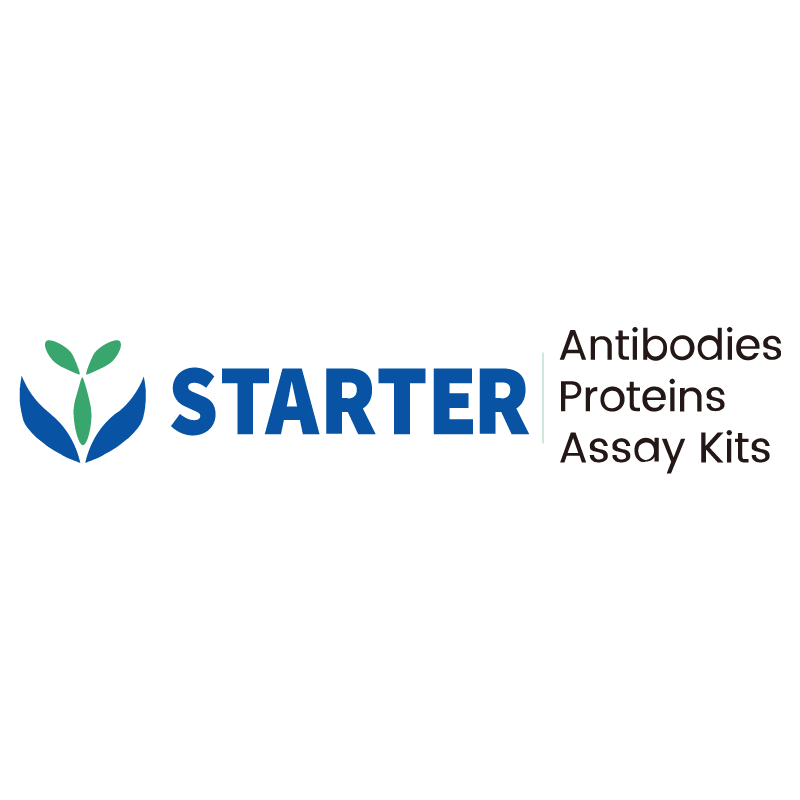IHC shows positive staining in paraffin-embedded human stomach. Anti-ZO-1 Receptor antibody was used at 1/250 dilution, followed by a HRP Polymer for Mouse & Rabbit IgG (ready to use). Counterstained with hematoxylin. Heat mediated antigen retrieval with Tris/EDTA buffer pH9.0 was performed before commencing with IHC staining protocol.
Product Details
Product Details
Product Specification
| Host | Rabbit |
| Antigen | ZO-1 Receptor |
| Synonyms | Tight junction protein 1; Tight junction protein ZO-1; Zona occludens protein 1; Zonula occludens protein 1; ZO1; TJP1 |
| Immunogen | Synthetic Peptide |
| Location | Cytoplasm, Cell membrane |
| Accession | Q07157 |
| Clone Number | S-2188-12 |
| Antibody Type | Recombinant mAb |
| Isotype | IgG |
| Application | IHC-P |
| Reactivity | Hu, Ms |
| Purification | Protein A |
| Concentration | 0.5 mg/ml |
| Conjugation | Unconjugated |
| Physical Appearance | Liquid |
| Storage Buffer | PBS, 40% Glycerol, 0.05% BSA, 0.03% Proclin 300 |
| Stability & Storage | 12 months from date of receipt / reconstitution, -20 °C as supplied |
Dilution
| application | dilution | species |
| IHC-P | 1:250-1:1000 | Hu, Ms |
Background
The ZO-1 receptor protein is a crucial component of tight junctions, which are essential for maintaining cell polarity and regulating the passage of substances across epithelial and endothelial cell layers. ZO-1, also known as zonula occludens-1, is a peripheral membrane protein that links transmembrane proteins of tight junctions to the actin cytoskeleton. It plays a significant role in the assembly and maintenance of tight junctions, thereby contributing to the barrier function of tissues. Additionally, ZO-1 is involved in various cellular processes such as cell signaling and proliferation, and its dysregulation has been implicated in several pathological conditions including cancer and inflammatory diseases.
Picture
Picture
Immunohistochemistry
IHC shows positive staining in paraffin-embedded human gastric cancer. Anti-ZO-1 Receptor antibody was used at 1/250 dilution, followed by a HRP Polymer for Mouse & Rabbit IgG (ready to use). Counterstained with hematoxylin. Heat mediated antigen retrieval with Tris/EDTA buffer pH9.0 was performed before commencing with IHC staining protocol.
IHC shows positive staining in paraffin-embedded human colon cancer. Anti-ZO-1 Receptor antibody was used at 1/250 dilution, followed by a HRP Polymer for Mouse & Rabbit IgG (ready to use). Counterstained with hematoxylin. Heat mediated antigen retrieval with Tris/EDTA buffer pH9.0 was performed before commencing with IHC staining protocol.
IHC shows positive staining in paraffin-embedded human breast cancer. Anti-ZO-1 Receptor antibody was used at 1/250 dilution, followed by a HRP Polymer for Mouse & Rabbit IgG (ready to use). Counterstained with hematoxylin. Heat mediated antigen retrieval with Tris/EDTA buffer pH9.0 was performed before commencing with IHC staining protocol.
IHC shows positive staining in paraffin-embedded mouse stomach. Anti-ZO-1 Receptor antibody was used at 1/250 dilution, followed by a HRP Polymer for Mouse & Rabbit IgG (ready to use). Counterstained with hematoxylin. Heat mediated antigen retrieval with Tris/EDTA buffer pH9.0 was performed before commencing with IHC staining protocol.


